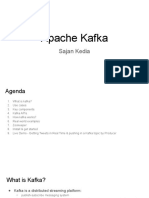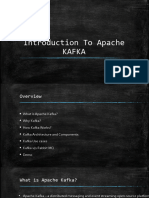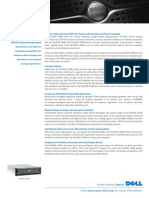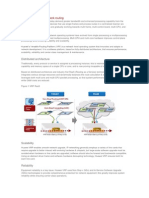0% found this document useful (0 votes)
37 views36 pagesKafka Overview
The document provides an overview of Kafka, detailing key concepts such as clusters, topics, consumer groups, and offsets, along with their use cases. It discusses the benefits of Kafka, including durability, real-time processing, and scalability, while also addressing its disadvantages like operational complexity and resource requirements. Additionally, it compares Kafka with RabbitMQ, highlighting their differences in message processing models, scalability, and use cases.
Uploaded by
puryabzpCopyright
© © All Rights Reserved
We take content rights seriously. If you suspect this is your content, claim it here.
Available Formats
Download as PDF, TXT or read online on Scribd
0% found this document useful (0 votes)
37 views36 pagesKafka Overview
The document provides an overview of Kafka, detailing key concepts such as clusters, topics, consumer groups, and offsets, along with their use cases. It discusses the benefits of Kafka, including durability, real-time processing, and scalability, while also addressing its disadvantages like operational complexity and resource requirements. Additionally, it compares Kafka with RabbitMQ, highlighting their differences in message processing models, scalability, and use cases.
Uploaded by
puryabzpCopyright
© © All Rights Reserved
We take content rights seriously. If you suspect this is your content, claim it here.
Available Formats
Download as PDF, TXT or read online on Scribd
/ 36





















































































